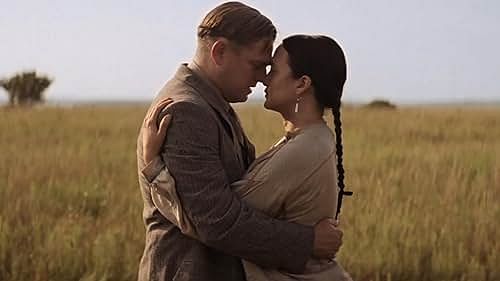
Credit: Special Arrangement
Of all the haunting images and disturbing sounds that permeate Martin Scorsese’s ‘Killers of the Flower Moon’, none is more upsetting than the guttural cry from Mollie Burkhart (Lily Gladstone), a tortured wail of rage and grief that escapes her reserved visage when tragedy strikes. And it often does: ‘Killers of the Flower Moon’ tells the true story, adapted from the book by David Grann, of how Mollie’s Osage community was decimated by murderous white men, who killed dozens of her tribe members for rights to their oil-rich land.
Mollie’s howl of pain is not quite like any sound heard before in a Scorsese film. But in many ways, Scorsese is emulating her jarring cry in the ominous aesthetics of ‘Killers of the Flower Moon’ and of his 2019 feature, ‘The Irishman’.
The movies have much in common: their creative teams, expansive running times, period settings, narrative density and epic scope. But what most keenly sets them apart from the rest of Scorsese’s work is the element by which the filmmaker is arguably most easily identified: their violence. In these films, the deaths, which are frequent, are hard and fast and blunt, a marked departure from the intricately stylised and ornately edited set pieces of his earlier work.
“The violence is different now, in these later movies,” Thelma Schoonmaker, his editor since 1980, noted recently. “And often it’s in a wide shot. It’s hardly ever a tight shot, which is very different from his earlier movies, right?”
It certainly is. Wide shots, for those unfamiliar with the lingo of cinematography, are spacious, open compositions, often full-body views of characters and their surroundings (frequently used for broad-scale action or establishing shots). Medium-wides are slightly closer, but they still allow us to observe multiple characters and their surroundings. The “tight shots” that Schoonmaker references as more typical of Scorsese’s earlier work are the medium shots, close-ups and extreme close-ups that place the camera (and thus the viewer) right in the middle of the melee.
He’s such an electrifying filmmaker that even when dramatising upsetting and difficult events, we find ourselves swept into the visceral virtuosity of his mise-en-scene. It’s this duality, the discomfort of enjoying the actions of criminals or killers or vigilantes, that makes his pictures so potent: Jake LaMotta’s beatings in ‘Raging Bull’, the high-speed execution of Johnny Boy in ‘Mean Streets’ and particularly the gun-toting rampage of Travis Bickle at the end of ‘Taxi Driver’ are all the more disturbing because of the spell Scorsese casts.
That’s not how the violence works in ‘The Irishman’ and ‘Killers of the Flower Moon’. When people die in these films, it’s grim, nasty, divergent in every way from the dirty kicks of ‘Goodfellas’ or ‘Casino’ (1995). In ‘The Irishman’, Sally Bugs (Louis Cancelmi) is dispatched in two setups, one wide and one medium, bang bang bang; the deaths of Whispers DiTullio (Paul Herman) and Crazy Joe Gallo (Sebastian Maniscalco) are likewise framed wide, hard and fast — simple, bloody, done. One of the film’s most upsetting scenes, when Frank (De Niro) drags his young daughter to the corner grocery store so she can watch him beat up a shopkeeper, is staged with similar simplicity: Scorsese keeps the scene to a single wide shot as Frank goes in, drags the man over his counter, smashes him through the door, kicks him, beats him and stomps on his hand. Scorsese cuts away only once — to the little girl’s horrified reaction.
Scorsese carries this sparseness into ‘Killers of the Flower Moon’. An early montage of Osage people on their deathbeds concludes with the murder of Charlie Whitehorn (Anthony J Harvey), who is killed in two cold, complementary medium-wides. Another character is hooded on the street, dragged into an alley and stabbed to death, with all of the action in two wide shots; a third is knocked down in one wide shot, then thrashed to death in a low-angle medium. The mayhem is over before it even starts.
Perhaps Scorsese was ready to dramatise violence as he remembered it, rather than how he had seen it in the movies. Or perhaps, at age 80, he is acutely aware of his own mortality, and that awareness is affecting how he sees and presents death in his own work. Scorsese ends ‘The Irishman’ with Frank literally picking out his own coffin and crypt; side characters are all introduced with on-screen text detailing their eventual deaths (“Frank Sindone — shot three times in an alley, 1980”). It’s coming for everyone, Scorsese seems to insist, not in a razzle-dazzle set piece, but in a sudden moment of brutality, shrouded in a cold, endless silence.